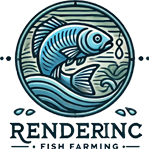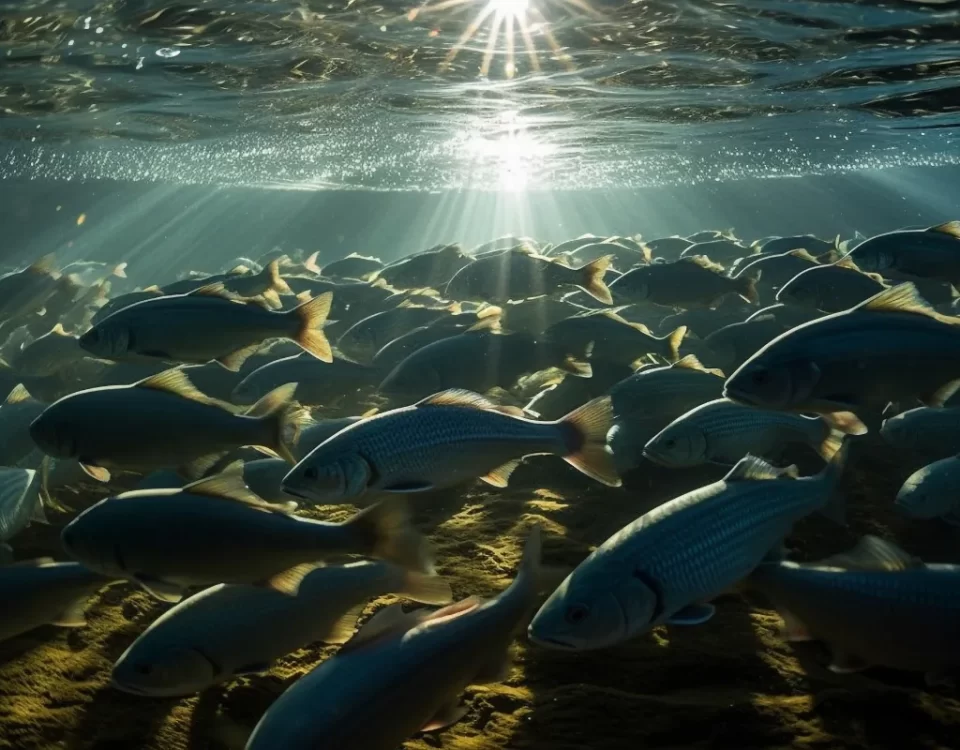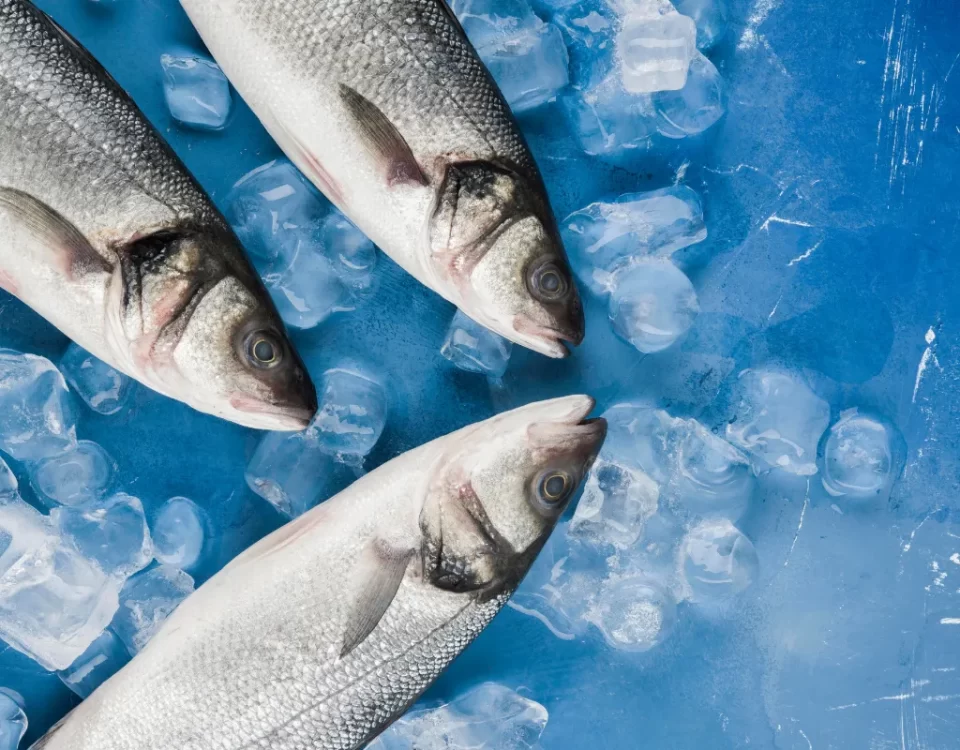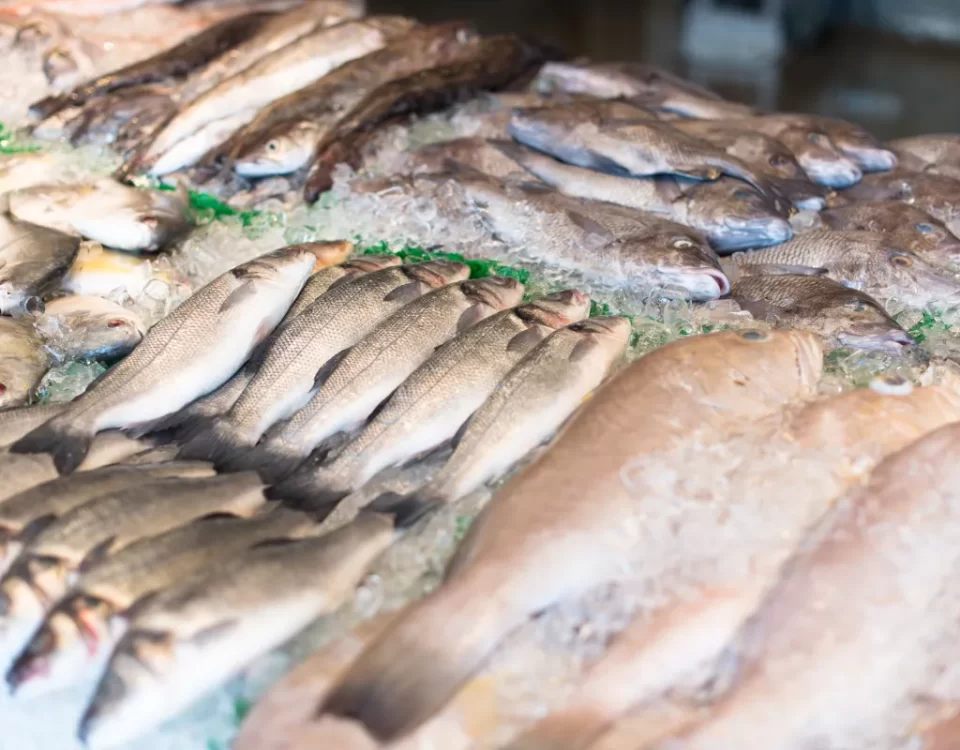Maximizing Yield in Small-Scale Fish Farms

The Ultimate Beginner’s Guide to Fish Farming
September 10, 2024
The Role of Robotics in Automated Fish Farming: A Deep Dive
September 12, 2024In the realm of small-scale fish farming, maximizing yield stands as a crucial element in ensuring both profitability and long-term sustainability. The capacity to produce a higher yield not only boosts financial returns for farmers but also plays a significant role in promoting the ecological balance of aquaculture systems. By optimizing the output of a fish farm, farmers can harness the full potential of their resources while maintaining an environmentally conscious operational model.
When a fish farm successfully increases its yield, the result is a ripple effect of benefits. Enhanced production directly translates into higher revenues, thereby amplifying the economic viability of the farm. By garnering more yield from the existing resources, small-scale fish farms can maximize efficiency and minimize wastage, contributing to the overall sustainability of the operation. In essence, each incremental gain in yield serves as a building block towards a thriving and prosperous fish farming venture.
Throughout this article, we will delve into various strategies and best practices aimed at elevating yield in small-scale fish farms. From improving breeding techniques to optimal feeding strategies, we will explore the multifaceted approaches that farmers can adopt to achieve a bountiful harvest. Furthermore, we will discuss the role of technology and innovation in augmenting yield, as well as the significance of environmental stewardship in fostering a balanced ecosystem within fish farms. Join us on this insightful journey as we unravel the secrets to unlocking the full potential of yield in small-scale fish farming endeavors.
Understanding Small-Scale Fish Farming
Small-scale fish farming refers to the practice of raising fish on a relatively modest scale, usually on a smaller piece of land or with fewer resources compared to large commercial operations. The size of a small-scale fish farm can vary, but it typically involves a more personalized approach to fish rearing and management. These farms are often run by individuals or families looking to supplement their income or provide a local source of fresh fish.
Defining Small-Scale Fish Farms
Small-scale fish farms can range from backyard ponds or tanks to larger setups that utilize existing water bodies such as lakes or rivers. These farms are characterized by their limited production capacity and often rely on simpler infrastructure and technology compared to industrial-scale operations. The focus in small-scale fish farming is often on sustainability and local consumption, rather than mass production for export.
Benefits and Challenges
Small-scale fish farming offers several advantages, including increased food security at the local level, employment opportunities in rural areas, and sustainability through responsible farming practices. Additionally, small-scale farms can promote community engagement and support local economies. However, these operations also face challenges such as limited access to resources, market competition from larger producers, and environmental concerns related to water quality and habitat preservation.
Importance of Maximizing Yield
In small-scale fish farms, maximizing yield is crucial for optimizing resources and ensuring profitability. By increasing the production output per unit of input, farmers can improve efficiency and maximize returns on their investment. Moreover, a higher yield can help meet local demand for fresh fish, enhance food security, and generate additional income for farm owners. Implementing effective management strategies and utilizing innovative technologies can help small-scale fish farmers achieve higher yields while maintaining sustainable practices.
Factors Influencing Yield in Small-Scale Fish Farms
Fish farming, even on a small scale, requires meticulous attention to detail in order to maximize yield and overall profitability. There are several key factors that greatly influence the success of a fish farm, ranging from water quality to stocking density, feeding practices, and disease prevention.
Water Quality
Proper water quality is paramount for the health and growth of fish in any aquaculture system. Fish depend on clean water with optimal levels of oxygen, pH, and ammonia, among other factors, to thrive. Without adequate water quality, fish may become stressed, leading to stunted growth, reduced feed conversion efficiency, and increased susceptibility to diseases. Regular monitoring of water parameters and implementing appropriate water treatment measures are essential to maintaining a healthy aquatic environment for your fish and ensuring maximum yield.
Stocking Density
The stocking density, or the number of fish stocked per unit area, plays a crucial role in determining the overall yield of a fish farm. While higher stocking densities can potentially lead to increased productivity, overcrowding can also result in elevated stress levels, competition for resources, and poor water quality due to elevated waste levels. It is essential to strike a balance between stocking density and space availability to prevent negative impacts on fish health and growth. Conducting regular assessments and calculations based on the specific requirements of the fish species being farmed can help determine the ideal stocking density for your operation.
Feeding Practices
Proper feeding practices are fundamental in achieving optimal growth rates and maximizing yield in small-scale fish farms. Providing a nutritionally balanced diet tailored to the specific nutritional requirements of the fish species being raised is essential for promoting growth and minimizing feed wastage. Overfeeding can lead to excess waste production, water pollution, and increased susceptibility to diseases, while underfeeding can result in poor growth rates and reduced overall yield. Developing a feeding regime based on the dietary needs of the fish, monitoring feed consumption, and adjusting feeding rates accordingly are crucial steps in enhancing the productivity of your fish farm.
Disease Prevention
Disease prevention is a critical aspect of ensuring high yield and overall success in small-scale fish farming operations. Fish health management practices, such as regular health checks, biosecurity measures, and vaccination programs, are essential for preventing the outbreak and spread of diseases that can significantly impact productivity. Stressors such as poor water quality, overcrowding, and inadequate nutrition can weaken the immune system of fish, making them more susceptible to pathogens. Implementing biosecurity protocols, practicing proper quarantine procedures, and working closely with aquatic veterinarians can help mitigate disease risks and maintain a healthy fish population, ultimately leading to improved yield and profitability.
Enhancing Yield Through Technology and Innovation
In the realm of small-scale fish farming, technology and innovation play crucial roles in maximizing yield and ensuring sustainable practices. Embracing technological advancements can revolutionize the way fish farmers operate, leading to increased efficiency and productivity. One of the key areas where technology has made a significant impact is in the realm of automated systems and smart sensors designed to streamline fish farm management.
Automated Feeding Systems and Fish Health Monitoring
Automated feeding systems have emerged as game-changers in small-scale fish farms, allowing farmers to precisely regulate feeding schedules and quantities. These systems not only reduce manual labor but also ensure that the fish are fed at optimal levels, promoting healthy growth and maximizing yield. In addition to feeding systems, sensors equipped with the latest monitoring technology can provide real-time data on water quality, temperature, and oxygen levels. By closely monitoring these crucial parameters, farmers can preemptively address any issues that may impact fish health, ultimately leading to higher yields.
Sustainable Practices: Aquaponics Integration
Integrating sustainable practices such as aquaponics can further enhance the yield of small-scale fish farms. Aquaponics combines aquaculture (fish farming) with hydroponics (growing plants in water) in a symbiotic system where fish waste acts as a nutrient source for plants, and the plants help purify the water for the fish. This closed-loop system not only maximizes space utilization but also promotes eco-friendly practices by reducing waste and resource consumption. By incorporating aquaponics into their operations, small-scale fish farmers can achieve higher yields while maintaining environmental sustainability.
Leveraging Data Analytics for Optimization
In the digital age, data analytics has become a powerful tool for optimizing production in small-scale fish farms. By collecting and analyzing data on factors such as feed efficiency, growth rates, and water quality, farmers can gain valuable insights into their operations. This data-driven approach enables farmers to make informed decisions, fine-tune their processes, and identify areas for improvement. By harnessing the power of data analytics, small-scale fish farmers can increase their yields, minimize waste, and operate more efficiently in a competitive market landscape.
Best Practices for Maximizing Yield
In the realm of small-scale fish farming, success hinges on a well-thought-out strategy that incorporates best practices to maximize yield. Here are essential guidelines to consider for small-scale fish farmers looking to optimize productivity:
Selecting the Right Fish Species
When embarking on a small-scale fish farming venture, choosing the appropriate fish species is paramount. Factors such as local climate, market demand, and infrastructure should inform this decision. Opt for hardy, fast-growing species that are well-suited to your farming environment. Tilapia, catfish, and trout are popular choices for small-scale operations due to their versatility and market value.
Monitoring Water Quality Parameters
Water quality is a foundational aspect of successful fish farming. Regular monitoring of parameters such as temperature, pH levels, dissolved oxygen, and ammonia levels is crucial. Fluctuations in these parameters can stress fish, leading to poor growth and susceptibility to diseases. Investing in quality testing equipment and maintaining optimal water conditions is essential for maximizing yield.
Implementing a Well-Balanced Feeding Regime
A well-balanced feeding regime is key to ensuring optimal growth and health of your fish. Tailor feed formulations to the nutritional requirements of the fish species you are farming. Overfeeding can lead to water quality issues and wasted feed, while underfeeding hampers growth potential. Consult with aquaculture nutritionists to develop feeding schedules that promote growth and minimize environmental impact.
Disease Prevention and Biosecurity Measures
Disease outbreaks can devastate a fish farm and lead to significant reductions in yield. Implement stringent biosecurity measures to prevent the introduction and spread of pathogens. Quarantine new fish arrivals, practice good hygiene, and regularly disinfect equipment to minimize disease risks. Develop a contingency plan in case of disease outbreaks to swiftly address and contain any issues that may arise.
Waste Management and Resource Efficiency
Efficient waste management practices not only promote environmental sustainability but also contribute to increased yield. Implement systems such as recirculating aquaculture systems (RAS) to minimize water usage and waste generation. Utilize waste products, such as fish excreta, as fertilizers for agricultural crops or in biogas production. Embracing resource efficiency measures not only boosts yield but also reduces operational costs, making your small-scale fish farm more economically viable in the long run.
Case Studies of Successful Small-Scale Fish Farms
In the realm of small-scale fish farming, success stories abound, serving as beacons of inspiration for aspiring aquaculturists. Let’s delve into the narratives of a few trailblazing individuals and their ventures that have not only survived but thrived in the competitive world of fish farming.
The Aquatic Haven: AquaGrove Farms
One such exemplary establishment is AquaGrove Farms, situated in the serene countryside of Vermont. This family-owned fish farm has transformed a modest pond into a flourishing aquatic haven. By adopting innovative aquaponics systems, AquaGrove Farms seamlessly integrates fish rearing with hydroponic vegetable cultivation, creating a symbiotic relationship that maximizes yields. The farm’s commitment to sustainability and eco-conscious practices has not only enhanced productivity but also garnered a loyal customer base willing to pay a premium for their organic produce.
Navigating Rough Waters: Blue Horizon Fisheries
On the other hand, Blue Horizon Fisheries, a small-scale operation in coastal Maine, faced its fair share of challenges in the tumultuous waters of fish farming. In the wake of a devastating disease outbreak that decimated their stock, the farm had to pivot swiftly to implement stringent biosecurity measures and invest in high-quality feeds to rebuild its inventory. Through unwavering perseverance and a commitment to continuous learning, Blue Horizon Fisheries emerged stronger than ever, demonstrating that resilience and adaptability are cornerstones of success in this industry.
From Pond to Plate: Sunfish Springs Aquaculture
Traveling south to the heart of Tennessee, we encounter Sunfish Springs Aquaculture, a micro-farm that has redefined the narrative of small-scale fish farming. By leveraging cutting-edge technology like automated feeding systems and water quality monitoring devices, this farm has optimized its operations for maximum efficiency and yield. The farm’s founder, a visionary entrepreneur with a deep passion for aquaculture, credits their success to a relentless pursuit of excellence and a willingness to embrace disruptive technologies in an industry traditionally rooted in tradition.
Lessons from the Waterfront
These compelling case studies offer invaluable insights into the diverse approaches and strategies employed by successful small-scale fish farms. While each narrative is unique, a common thread emerges – a commitment to innovation, adaptability, and a deep reverence for the delicate balance of nature. Aspiring fish farmers can draw inspiration from these stories, understanding that success in this field requires not only hard work and perseverance but also a willingness to embrace change and challenge conventions.
Conclusion
Key Points
In this article, we have explored strategies and best practices to maximize yield in small-scale fish farms. We discussed the significance of proper management, nutrition, stocking density, and water quality in achieving optimal yields. By focusing on these key areas, fish farmers can improve productivity and profitability on their farms.
Importance of Maximizing Yield
Maximizing yield in small-scale fish farms is crucial for both profitability and sustainability. By effectively managing resources and implementing efficient practices, farmers can enhance their output while maintaining a healthy environment for their fish. Increased yield not only boosts revenue but also ensures the long-term viability of the farm.
Implementing Strategies
I encourage readers to heed the advice shared in this article and adopt the strategies and best practices outlined. By optimizing stocking densities, providing quality feed, monitoring water parameters, and investing in proper infrastructure, fish farmers can maximize their yields and secure the success of their operations. Consistency and attention to detail are key in achieving desired results.
Moving Forward
As you strive to enhance the productivity of your small-scale fish farm, remember that continuous learning and adaptation are essential. Stay informed about the latest advancements in fish farming practices and be open to incorporating new techniques to further improve your yield. By staying proactive and dedicated, you can cultivate a thriving fish farm that not only brings financial rewards but also contributes to the sustainability of the aquaculture industry.

Michael Rivers is an experienced aquaculture enthusiast with over a decade of hands-on knowledge in fish farming and sustainable aquatic systems. Passionate about promoting eco-friendly practices, he shares his expertise on fish breeding, water management, and the latest advancements in aquaculture technology. Through his blog, Michael aims to help both beginners and seasoned fish farmers achieve success in their ventures while contributing to the growth of sustainable food production.




